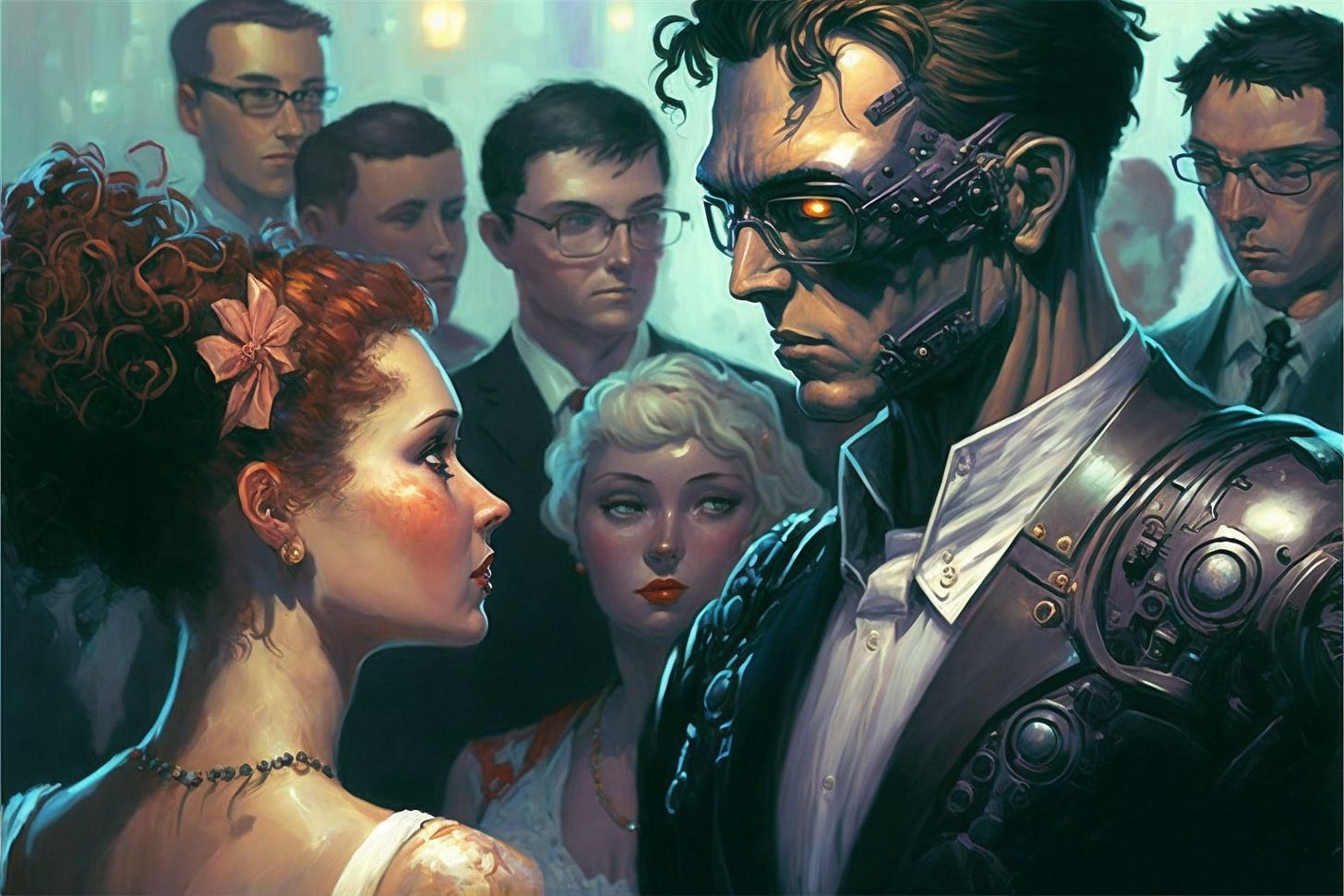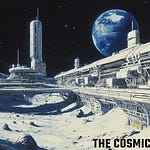by Brian Scott Pauls
Last year, billionaire entrepreneur Elon Musk’s Neuralink released a video of a trained monkey with a brain-computer interface (BCI)—a cyborg monkey—playing video games with its mind.
On November 30, Musk said the company would begin human trials of its BCI in about six months. He also declared he will eventually have a Neuralink BCI placed in his own body as part of a future Neuralink presentation.
The term “cyborg” (short for “cybernetic organism”), first appeared in a 1960 article by researchers Manfred E. Clynes and Nathan S. Kline. Merriam-Webster defines a cyborg as “a bionic human”, and “bionic” as “having normal biological capability or performance enhanced by or as if by electronic or electromechanical devices.”
Cyborgs, of course, have long populated science fiction. Perhaps the most recognizable examples to the public are Arnold Schwarzenegger’s character from the Terminator movie franchise, and Steve Austin from The Six Million Dollar Man. While most know Austin through Lee Majors’ television portrayals of him starting in 1973, the character first appeared a year earlier in the novel Cyborg, by Martin Caidin.
It turns out, however, that cyborgs have a much longer pedigree in literature—going back nearly a hundred-fifty years before Clynes and Kline invented a name for them, and before Caidin appropriated it as the title of his novel.
To incorporate many of these works, one has to deviate a bit from the Merriam-Webster definition. While nineteenth-century authors knew about electricity, they often thought of “technology” in terms of mechanical devices. This is what we find in Edgar Allan Poe’s 1839 short story The Man That Was Used Up, a satire about a celebrated combat veteran who is so wounded, a great part of his body has been replaced by prostheses. It is also the conceit behind E.V. Odle’s 1923 novel The Clockwork Man.
If we designate the first publication of Amazing Stories in 1926 as the beginning of modern science fiction, then the first literary cyborg of the contemporary era may have been George Henry Weiss’s The Machine Man of Ardathia, which appeared in that magazine in 1927.
In the real world, mechanical cyborgs have been with us throughout recorded history. In 2000, archaeologists found an Egyptian mummy with a prosthetic toe, dating to 710 B.C.E. or earlier. You can find examples of prosthetics in Ancient Rome, the Middle Ages, the Renaissance, during the American Civil War, and today.
Medical implants have an even longer history, going back to at least 2000 B.C.E., when bamboo pegs were used to replace missing teeth in China. Contact lenses were first used in Europe during the late 1800s. Surgeons performed the first total hip replacement in 1938, and implanted the first artificial heart valve in 1952, the first pacemaker in 1958, the first cochlear implant in 1962, the first artificial heart in 1969, and the first coronary stents in 1986.
Researchers also “…implante[d] electrodes in deep cortical structures…” of the brain “…in the early 1950s…”, and “implant[ed] a deep-brain electrical stimulation system" to treat Parkinson’s disease in 1987.
Considered broadly, cyborgs are nothing new.
The frontier that lies ahead appears to include more sophisticated implants interacting directly with the human brain. Computer scientist Jacques Vidal introduced the phrase “brain-computer interface” in a 1973 paper, and today there are at least seven companies, including Neuralink, pursuing the idea. If Elon Musk doesn’t get there, someone else likely will.
Science fiction has long served as the “thought experiment laboratory” where serious thinkers (writers and readers alike) can consider the implications of awe-inspiring and socially disruptive technologies. With the possibility of new, much more powerful, computer-brain interfaces on the horizon, we should revisit the cyborg theme—carefully reflecting on what it might mean given our current cultural, political, and economic global circumstances. This is important, because it’s no longer cyberpunk—it’s tomorrow.











